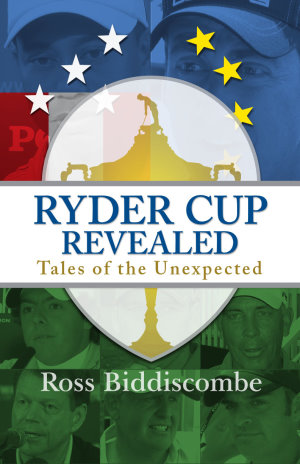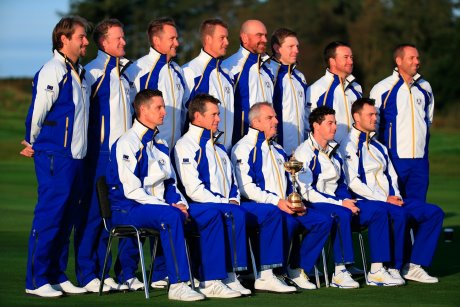 One of the unique aspects – and actually a myth – of the Ryder Cup is that the golfers take part for pride alone, not prize money. Strictly speaking, that is the truth, but it is not quite the whole truth because the players have always received some form of compensation.
One of the unique aspects – and actually a myth – of the Ryder Cup is that the golfers take part for pride alone, not prize money. Strictly speaking, that is the truth, but it is not quite the whole truth because the players have always received some form of compensation.
In the earliest matches, Ryder Cup budgets included a line providing payments to the golfers not only for their expenses (in home matches that might mean travelling to the golf course), but also a salary that recompensed the pros who took unpaid leave to represent their country. Selection for the contest overseas in the 1920s or 1930s could mean a month away from the pro shop, so in effect the two PGAs had to find the money to pay the players’ wages while they were on Ryder Cup duty.
£20 for travel and £50 ‘kit allowance’
For example, in 1927 for the inaugural match in Massachusetts, the nine British players shared £906 9s. 8d., while for the 1929 contest at home, the British PGA committee records state GB team members each received “£3 10s. 0d. per day for expenses to include all railway fares and that claims for refund of expenses must be accompanied by a statement of expenditure”. Given a day to travel and a couple of practice rounds, a British player was given something in the region of £20 for expenses. In addition, there was also what was called “a kit allowance” for golfing equipment, estimated to be worth as much as £50.
However, the players were not always happy about the small amounts of money coming their way. The profits from the 1933 match at Southport & Ainsdale still left the PGA £1,200 short of their target amount, so there was no chance of paying the GB players to attend a celebratory dinner a few months afterwards. The PGA’s own minutes, however, state: “The honour and publicity of representing their country in an International of the importance of the Ryder Cup should be ample inducement for the players to accept the invitation.” Even so, some of the golfers did not attend and did not even reply to the invite.
Indirect earning opportunities
Over the next few decades, the player compensation system remained, but as the honour of being a Ryder Cup player grew larger, so there were more chances for players to earn indirect income by improving deals with sponsors or charging more money for lessons or exhibition matches. Also, the freebies the players received began to increase beyond some golf balls, a few items of equipment or clothing and a blazer to wear in the clubhouse.
The problem was that after World War II, the finances of the two PGAs started to diverge and while the American players could expect to be treated like sporting superstars, the British team was handled more like second-class citizens. It was cashmere and leather for the US against nylon and plastic for GB, and those differences became rooted in the players’ minds. For example, Neil Coles was a 27-year-old debutant

for the GB team in 1961 and was delighted to play in the match, but also baffled by how he was treated. “I was still young to make the team,” he remembers. “Coombe Hill Golf Club had a dinner for myself and Ken Bousfield because we were both linked with the club and had both made the team. We were each presented with a gold watch, inscribed on the back because in those days it was a personal victory just to make the team.”
How Coles got his Pringle cardigan
But the glow of recognition was soon forgotten when Coles reached Royal Lytham & St Annes. “The PGA gave us a special uniform with a jacket to wear off the course, four golf shirts and one blue pullover to play in and the plastic golf bag with head covers. But my pullover was too small and I asked for a bigger one. The PGA people said they didn’t have one even after I told them it felt restrictive when I swung and I couldn’t play in it. They said I just had to wear it.” Coles, however, was not to be deterred. “I went into the Pringle tent in the golf village and asked if they had a bigger blue pullover. They said they didn’t have one, but they had a cardigan. I said: ‘That’ll do.’ So I played the entire tournament in that, with no badge on it. You can see it in the photos.”
A huge confidence boost
By the late 1970s, the European players were at least given expenses for the week – estimates put the figure at between £2,000-£3,000 – to match the Americans, while by the next decade, after Team Europe was formed and the matches became more competitive, the British PGA achieved much betters deals for their players. For instance, the arrangement with clothing company Austin Reed – owner of golf brands Glenmuir and Proquip – was worth £60,000 and provided each member of the team with a £600 cashmere jacket, eight cashmere jerseys, a £400 suit and a dozen shirts. The players were also given fitted waterproofs, warm-up jackets, golf shoes, street shoes and much more. The team that had felt like ragamuffins for so long left for PGA National in Florida in 1983 with £4,000 worth of goodies each. This was a huge confidence boost and a far cry from the cheap and cheerful uniforms of the past, like the white jackets with blue-edged lapels worn by the 1973 GB team that made them resemble a comical gang of Eton rowers.

The American team had fewer gripes over expenses (by Brookline in 1999, their payment for the week was up to $5,000), but they did question the lack of payment for their services, not so much prize money as appearance money. This caused a rift with the PGA of America, but the two sides eventually agreed that the captain and each player would receive $200,000 from the match income to donate to their own charities and golf projects. To millionaire golfers, this was a reasonable compromise.
Captains’ gifts
British and European golfers never had such a dispute. Instead, the players have more likely valued the priceless memories from the team room or even the extravagant gifts from the captains (of course, paid for by Ryder Cup income). Tony Jacklin began that trend and every European skipper has continued it, including Sam Torrance in 2002. “My wife, Suzanne, and I prepared the gifts,” the Scot told Golf Today afterwards, “so that when they returned to their room every night they had one waiting there for them. And I mean a very special gift… [like a] dinner set, the main gift that went on display on the Tuesday night. I had it presented in an oak case, a 12-piece setting with the names of all the players engraved on the cutlery, captains and vice-captains on the carving knives and forks, and so on. It really was something.” Of course, the captains did not pay for these gifts – the profits of the European end of the Ryder Cup was, by now, able to pick up these kinds of bills.
Pictured top: 2014 European Ryder Cup Team in ProQuip Golf waterproofs (photo Getty Images).
The above story is taken from ‘Ryder Cup Revealed’ by Ross Biddiscombe, a book which explains the Ryder Cup’s topsy-turvy commercial history and outlines the match’s tales of money and business that are often both unusual and expected.
Ross Biddiscombe’s acclaimed book Ryder Cup Revealed is available at amazon.co.uk via this hotlink: https://tinyurl.com/y9w75whd

